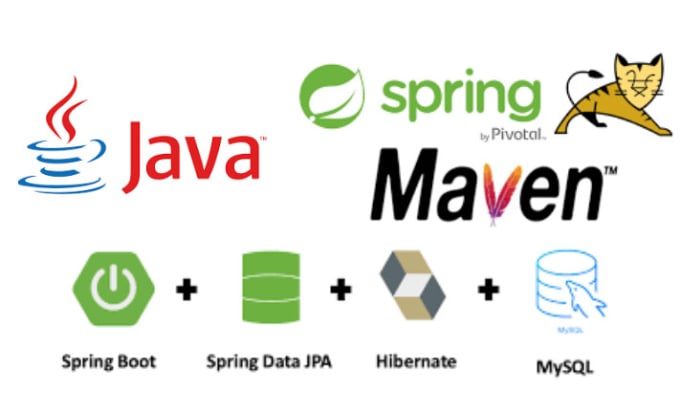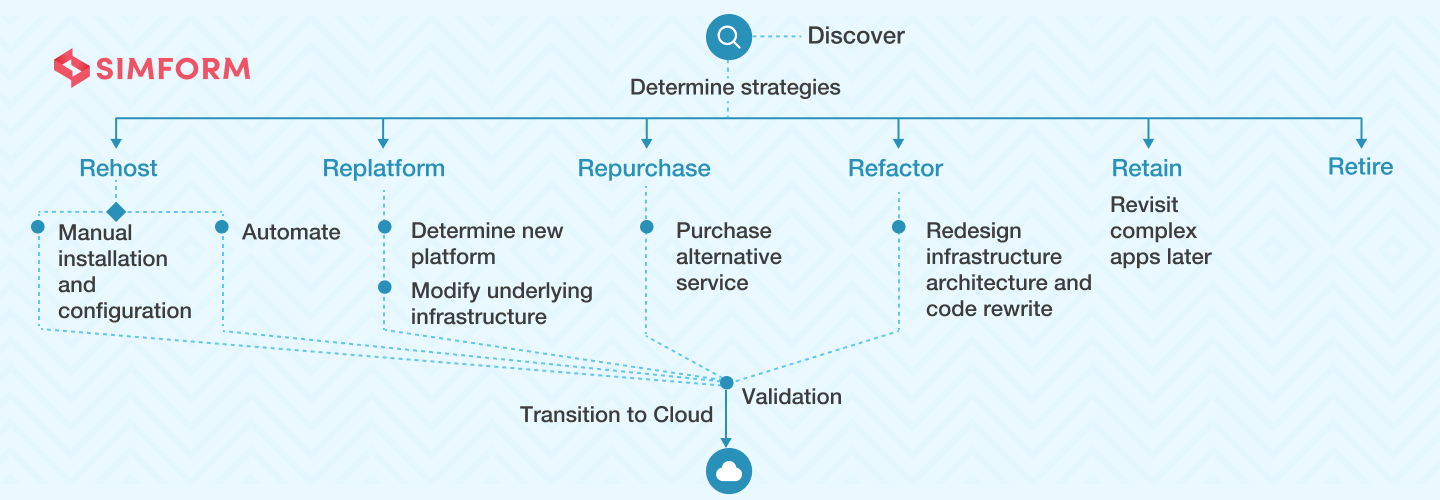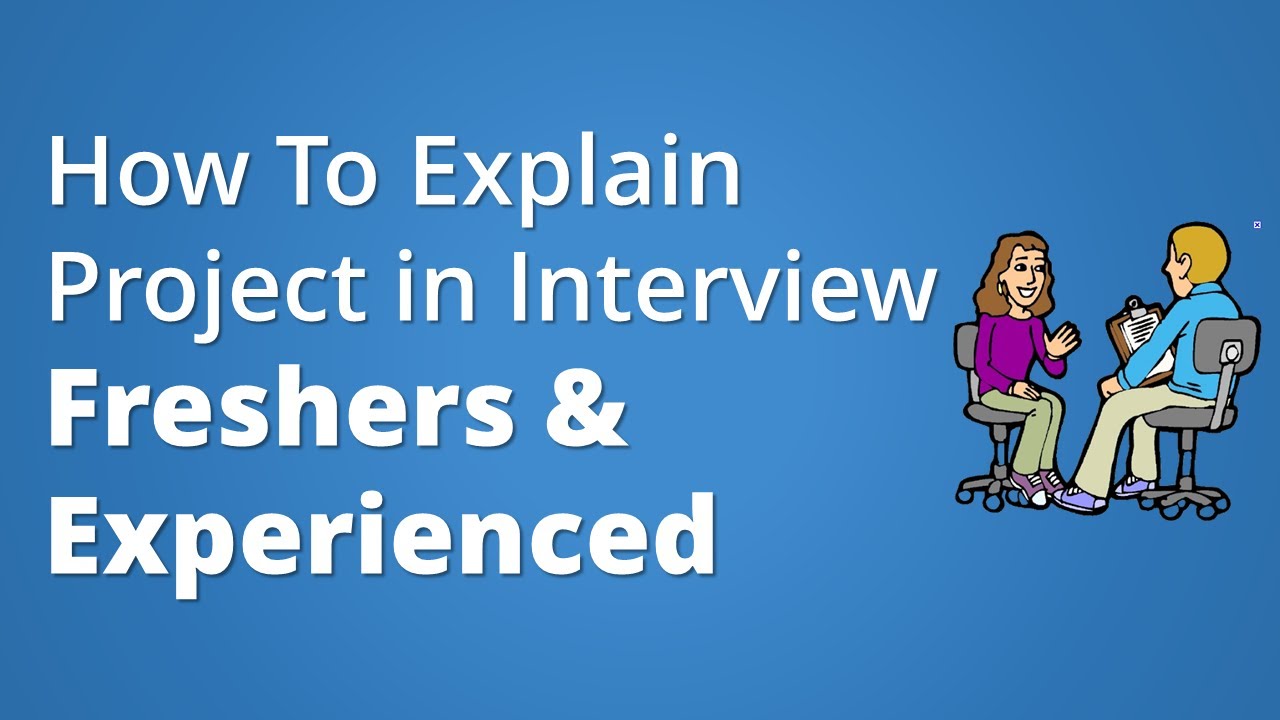Interview Start Script
Introduction:
- Interviewer: “Hello [Candidate’s Name], thank you for joining us today. How are you?”
- Candidate: [Response]
- Interviewer: “Great to hear! My name is [Your Name], and I will be conducting your interview today. We appreciate your interest in the [Position] role at [Company Name].”
Interview Overview: 4. Interviewer: “To give you a brief overview, today’s interview will consist of a few sections. We’ll start with some questions about your background and experience. Then, we’ll move on to technical questions related to Java, PostgreSQL, and full-stack development. Finally, we will discuss some situational questions to understand how you approach various scenarios.”
Background Questions: 5. Interviewer: “Before we dive into the technical questions, could you please tell me a bit about yourself and your experience, particularly focusing on your work with Java and PostgreSQL?”
- Candidate: [Response]
- Interviewer: “Thank you again, [Candidate’s Name]. Have a great day!”
Java Questions
What are the main principles of OOP?
- Answer: Encapsulation, Inheritance, Polymorphism, and Abstraction.
What is the difference between ArrayList and LinkedList in Java?
- Answer: ArrayList is based on a dynamic array, while LinkedList is based on a doubly-linked list. ArrayList provides fast random access, LinkedList provides faster insertions and deletions.
What is a lambda expression in Java?
- Answer: Lambda expressions are a feature in Java that allow us to write anonymous methods, providing a clear and concise way to implement single-method interfaces.
Explain the term ‘Functional Interface’ in Java.
- Answer: A functional interface is an interface with a single abstract method, and can thus be implemented using lambda expressions.
What is the difference between ‘==’ and ‘equals()’ in Java?
- Answer: ‘==’ checks for reference equality, whereas ’equals()’ checks for value equality.
What is a Java Stream?
- Answer: A sequence of elements supporting sequential and parallel aggregate operations.
What is a thread-safe collection in Java?
- Answer: Collections that are designed to be safely accessed and modified by multiple threads, e.g.,
ConcurrentHashMap.
- Answer: Collections that are designed to be safely accessed and modified by multiple threads, e.g.,
What is a NullPointerException?
- Answer: It is a runtime exception thrown when an application attempts to use
nullin a case where an object is required.
- Answer: It is a runtime exception thrown when an application attempts to use
PostgreSQL Questions
Explain the difference between a table and a view in PostgreSQL.
- Answer: A table stores data physically, while a view is a virtual table created by a query joining one or more tables.
What are indexes and why are they used in PostgreSQL?
- Answer: Indexes are special lookup tables that the database search engine uses to speed up data retrieval.
What is a primary key in PostgreSQL?
- Answer: A primary key is a unique identifier for a record in a table, ensuring that no duplicate values are present.
What is a foreign key in PostgreSQL?
- Answer: A foreign key is a field that links one table to the primary key of another table, enforcing referential integrity.
How do you handle transactions in PostgreSQL?
- Answer: Using the commands
BEGIN,COMMIT, andROLLBACKto control the transaction flow.
- Answer: Using the commands
Full-Stack Development Questions
Explain MVC architecture.
- Answer: MVC (Model-View-Controller) is a design pattern that separates an application into three interconnected components: Model (data), View (UI), and Controller (business logic).
What are RESTful services?
- Answer: RESTful services are web services that follow the REST (Representational State Transfer) architecture, using standard HTTP methods like GET, POST, PUT, and DELETE.
What is the purpose of an ORM (Object-Relational Mapping) tool?
- Answer: An ORM tool facilitates the conversion of data between incompatible type systems in object-oriented programming and relational databases.
Explain the difference between client-side and server-side rendering.
- Answer: Client-side rendering renders content in the browser using JavaScript, while server-side rendering renders content on the server and sends it to the client as a fully-formed HTML page.
What are microservices?
- Answer: Microservices are an architectural style that structures an application as a collection of small, autonomous services modeled around a business domain.
Java Questions (continued)
What is the purpose of the
volatilekeyword in Java?- Answer: The
volatilekeyword is used to indicate that a variable’s value will be modified by different threads, ensuring visibility of changes across threads.
- Answer: The
What is a
transientvariable in Java?- Answer: A
transientvariable is not serialized during the serialization process, meaning it will not be persisted.
- Answer: A
Explain method overloading and method overriding in Java.
- Answer: Method overloading allows multiple methods with the same name but different parameters. Method overriding allows a subclass to provide a specific implementation of a method already defined in its superclass.
What is the
finalkeyword used for in Java?- Answer: The
finalkeyword can be used to mark a variable as constant, prevent method overriding, and prevent inheritance.
- Answer: The
What is the difference between
HashMapandTreeMapin Java?- Answer:
HashMapis an unordered collection that does not guarantee the order of its keys.TreeMapis an ordered collection that maintains its keys in natural or custom order.
- Answer:
What is the purpose of the
synchronizedkeyword in Java?- Answer: The
synchronizedkeyword is used to control access to a block of code or object, ensuring that only one thread can execute it at a time.
- Answer: The
What is the Java Memory Model (JMM)?
- Answer: The Java Memory Model defines how threads interact through memory and what behaviors are allowed in concurrent execution.
What are Java annotations?
- Answer: Annotations are metadata added to Java code (classes, methods, variables) to provide additional information which can be processed by the compiler or runtime.
Explain the purpose of the
Optionalclass in Java.- Answer: The
Optionalclass is a container object used to contain not-null objects, helping to avoidNullPointerExceptionand representing the presence or absence of a value.
- Answer: The
What is the difference between
CallableandRunnablein Java?- Answer:
Callablecan return a result and throw a checked exception, whereasRunnablecannot return a result and does not throw checked exceptions.
- Answer:
PostgreSQL Questions (continued)
What is the difference between
INNER JOINandOUTER JOINin PostgreSQL?- Answer:
INNER JOINreturns only the matching rows from both tables, whileOUTER JOINreturns all rows from one table and the matching rows from the other table, plus nulls where there is no match.
- Answer:
Explain the use of
TRIGGERin PostgreSQL.- Answer: A
TRIGGERis a function that is automatically invoked by PostgreSQL in response to certain events on a particular table or view.
- Answer: A
How do you handle JSON data in PostgreSQL?
- Answer: Using the
JSONandJSONBdata types to store JSON data, along with a variety of functions and operators to manipulate JSON data.
- Answer: Using the
Full-Stack Development Questions (continued)
What is the purpose of a build tool in Java, such as Maven or Gradle?
- Answer: Build tools automate the process of compiling code, managing dependencies, packaging, and deploying Java applications.
What is CORS and why is it important?
- Answer: Cross-Origin Resource Sharing (CORS) is a security feature implemented by browsers to restrict how resources on a web page can be requested from another domain, important for preventing security vulnerabilities like Cross-Site Request Forgery (CSRF).
What is the difference between a session and a cookie?
- Answer: A session is server-side storage of user data, while a cookie is client-side storage. Sessions usually expire when the user logs out or the browser is closed, whereas cookies can have a set expiration date.
Explain the role of a reverse proxy server in web applications.
- Answer: A reverse proxy server sits in front of web servers, handling client requests and distributing them to appropriate backend servers. It can improve security, load balancing, and caching.
Java Questions (continued)
What is garbage collection in Java?
- Answer: Garbage collection is the process by which Java programs perform automatic memory management by reclaiming memory occupied by objects no longer in use.
What is the
StringBuilderclass in Java?- Answer:
StringBuilderis a mutable sequence of characters, used to create and manipulate strings more efficiently thanString.
- Answer:
Explain the Singleton design pattern.
- Answer: The Singleton pattern ensures that a class has only one instance and provides a global point of access to it.
What is reflection in Java?
- Answer: Reflection is the ability of a program to inspect and modify its own structure and behavior at runtime.
What is an abstract class in Java?
- Answer: An abstract class cannot be instantiated and is used to declare common characteristics for subclasses, containing both abstract methods and concrete methods.
What is a marker interface?
- Answer: A marker interface is an interface with no methods, used to convey metadata to the Java runtime or compiler, like
SerializableandCloneable.
- Answer: A marker interface is an interface with no methods, used to convey metadata to the Java runtime or compiler, like
What is the use of the
defaultkeyword in interfaces?- Answer: It allows interfaces to provide concrete method implementations, enabling backward compatibility without requiring all implementing classes to provide the method.
Explain the
try-with-resourcesstatement.- Answer: It is a try statement that declares one or more resources, which are automatically closed at the end of the statement, ensuring proper resource management.
What is the difference between
throwandthrowsin Java?- Answer:
throwis used to explicitly throw an exception, whilethrowsis used in a method signature to declare that the method may throw certain exceptions.
- Answer:
What is a
WeakReferencein Java?- Answer: A
WeakReferenceis a reference that does not prevent its referent from being garbage-collected, useful for implementing memory-sensitive caches.
- Answer: A
PostgreSQL Questions (continued)
What is a
sequencein PostgreSQL?- Answer: A sequence is a database object used to generate a sequence of unique numeric values, often used for auto-incrementing primary keys.
How do you perform a database backup in PostgreSQL?
- Answer: Using the
pg_dumputility for single database backups andpg_basebackupfor backing up the entire database cluster.
- Answer: Using the
What is the difference between
TEXTandVARCHARdata types in PostgreSQL?- Answer: Both
TEXTandVARCHARcan store variable-length character strings, butVARCHARcan have a length limit specified, whileTEXThas no such limit.
- Answer: Both
What is the purpose of
pg_stat_statements?- Answer: It is an extension that tracks execution statistics of SQL statements, helping to analyze query performance and identify slow queries.
What is a materialized view in PostgreSQL?
- Answer: A materialized view is a view that stores the result of a query physically, allowing for faster access but requiring manual refreshes to update the data.
Full-Stack Development Questions (continued)
What is Docker and how is it used in development?
- Answer: Docker is a platform for developing, shipping, and running applications in containers, providing a consistent environment across different stages of development.
Explain the concept of continuous integration (CI).
- Answer: CI is a development practice where developers frequently integrate code into a shared repository, often with automated builds and tests to detect issues early.
What is the role of a CDN (Content Delivery Network)?
- Answer: A CDN distributes content across multiple servers globally, reducing latency and improving load times for users by serving content from the nearest server.
What are Web Components?
- Answer: Web Components are a set of web platform APIs that allow developers to create reusable custom elements with encapsulated functionality and styling.
What is serverless architecture?
- Answer: Serverless architecture allows developers to build and run applications without managing servers, where the cloud provider dynamically manages resource allocation.
Explain the concept of state management in frontend frameworks.
- Answer: State management involves handling the state of an application, ensuring consistent data flow and enabling efficient updates to the UI, commonly using tools like Redux or Vuex.
What is GraphQL and how does it differ from REST?
- Answer: GraphQL is a query language for APIs that allows clients to request exactly the data they need, differing from REST by providing more flexibility and efficiency in data retrieval.
What are PWAs (Progressive Web Apps)?
- Answer: PWAs are web applications that provide a native app-like experience, featuring offline functionality, push notifications, and improved performance.
What is responsive design?
- Answer: Responsive design is a web design approach that ensures web pages render well on a variety of devices and screen sizes by using flexible layouts and media queries.
Explain the role of a load balancer in web applications.
- Answer: A load balancer distributes incoming network traffic across multiple servers to ensure high availability, reliability, and performance of the application.
Advanced Full-Stack Questions
What is a SPA (Single Page Application)?
- Answer: An SPA is a web application that interacts with the user by dynamically rewriting the current page rather than loading entire new pages from the server.
What are micro frontends?
- Answer: Micro frontends involve breaking down a frontend app into smaller, more manageable pieces, each built and managed by different teams, similar to microservices in backend development.
Explain the concept of middleware in web development.
- Answer: Middleware is software that sits between the client and server, processing requests and responses, often used for tasks like authentication, logging, and data parsing.
What is OAuth and how is it used?
- Answer: OAuth is an open standard for access delegation, commonly used to grant websites or applications limited access to user information without exposing credentials.
What is the difference between Monolithic and Microservices architecture?
- Answer: Monolithic architecture is a single unified codebase, while microservices architecture is a collection of small, loosely coupled services, each responsible for a specific functionality.
What is a reverse proxy and give an example?
- Answer: A reverse proxy forwards client requests to backend servers, enhancing security, load balancing, and performance. Examples include Nginx and HAProxy.
What is WebAssembly?
- Answer: WebAssembly (Wasm) is a binary instruction format for a stack-based virtual machine, allowing code written in multiple languages to run on the web at near-native speed.
What is the role of the Service Worker in a PWA?
- Answer: Service Workers are scripts that run in the background, enabling offline functionality, push notifications, and background data synchronization for PWAs.
What is API Gateway?
- Answer: An API Gateway acts as a single entry point for API requests, managing traffic, authorization, and routing to various backend services.
Explain the use of CI/CD pipelines.
- Answer: CI/CD pipelines automate the steps involved in software delivery, from code integration and testing to deployment, ensuring rapid and reliable release cycles.
Java Questions (continued)
What is the difference between checked and unchecked exceptions in Java?
- Answer: Checked exceptions are checked at compile-time, whereas unchecked exceptions (RuntimeExceptions) are checked at runtime.
Explain the concept of the Java Memory Model (JMM).
- Answer: The JMM defines how threads interact through memory and what behaviors are allowed in concurrent execution, ensuring visibility and ordering of shared variables.
What is an
enumin Java?- Answer: An
enumis a special Java type used to define collections of constants, enhancing type safety and readability.
- Answer: An
What are the types of polymorphism in Java?
- Answer: Compile-time (or static) polymorphism achieved via method overloading, and runtime (or dynamic) polymorphism achieved via method overriding.
What is a
CopyOnWriteArrayListin Java?- Answer: It is a thread-safe variant of
ArrayListwhere all mutative operations (add, set, etc.) are implemented by making a fresh copy of the underlying array.
- Answer: It is a thread-safe variant of
What are the differences between
ExecutorServiceandForkJoinPool?- Answer:
ExecutorServiceis used for managing a pool of threads and executing tasks asynchronously, whileForkJoinPoolis specialized for divide-and-conquer algorithms with work-stealing.
- Answer:
What is the
@FunctionalInterfaceannotation in Java?- Answer: It is used to indicate that an interface is intended to be a functional interface (an interface with a single abstract method), which can be used in lambda expressions and method references.
What is the
Patternclass in Java used for?- Answer: The
Patternclass is used for defining patterns in regular expressions, which can be used for pattern matching and searching in strings.
- Answer: The
Explain the difference between
FutureandCompletableFuturein Java. - Answer:Futurerepresents a result of an asynchronous computation but is limited in functionality, whileCompletableFutureprovides a more flexible and feature-rich way to handle asynchronous programming with additional methods for composing and combining futures.
PostgreSQL Questions (continued)
What is
pg_restorein PostgreSQL? - Answer:pg_restoreis a utility for restoring a PostgreSQL database from an archive created bypg_dumpin one of the non-plain-text formats.Explain the use of the
pg_trgmextension in PostgreSQL. - Answer: Thepg_trgmextension provides functions and operators for determining the similarity of text based on trigram matching, useful for full-text search and fuzzy string matching.What is
pgAdmin? - Answer:pgAdminis an open-source administration and management tool for PostgreSQL, providing a graphical interface for managing databases, running queries, and visualizing data.What is the
plpgsqllanguage in PostgreSQL? - Answer:plpgsqlis a procedural language in PostgreSQL used to write functions and trigger procedures, combining SQL with procedural constructs like loops and conditionals.Explain the use of the
arraydata type in PostgreSQL. - Answer: Thearraydata type allows columns to store arrays of values, supporting various operations and functions for querying and manipulating array elements.What are unlogged tables in PostgreSQL? - Answer: Unlogged tables do not write data to the write-ahead log (WAL), making them faster for write operations but non-recoverable after a crash.
What is the
USINGclause in PostgreSQL? - Answer: TheUSINGclause is used in SQL joins to specify a common column for the join condition, simplifying queries by avoiding redundant column names.How does the
RETURNINGclause work in PostgreSQL? - Answer: TheRETURNINGclause in anINSERT,UPDATE, orDELETEstatement returns the values of specified columns from the affected rows, allowing retrieval of data without an additional query.
Full-Stack Development Questions (continued)
Explain the concept of API rate limiting. - Answer: API rate limiting is a technique used to control the number of requests a client can make to an API within a specified time frame, helping to prevent abuse and ensure fair usage.
What is a NoSQL database and give an example? - Answer: NoSQL databases are non-relational databases designed for scalability and flexibility, often used for handling large volumes of unstructured or semi-structured data. Examples include MongoDB and Cassandra.
Explain the concept of “lazy loading” in web development. - Answer: Lazy loading is a design pattern that delays the loading of non-critical resources (like images or scripts) until they are needed, improving initial load time and performance.
What are environment variables and how are they used in web development? - Answer: Environment variables are key-value pairs used to configure application settings and manage sensitive information like API keys and database credentials without hardcoding them into the source code.
What is a Content Security Policy (CSP)? - Answer: CSP is a security feature that helps prevent cross-site scripting (XSS), clickjacking, and other code injection attacks by specifying which content sources are trusted.
Advanced Full-Stack Questions (continued)
What is SSR (Server-Side Rendering) in the context of web applications? - Answer: SSR is a technique where HTML is generated on the server and sent to the client, improving initial load performance and SEO for web applications.
What is the purpose of using a linter in your development workflow? - Answer: A linter is a tool that analyzes code for potential errors, style issues, and best practices, helping maintain code quality and consistency.
What is a token-based authentication system? - Answer: A token-based authentication system uses tokens (like JWTs) to validate user identity, allowing stateless authentication and session management across distributed systems.
What are WebSockets and how do they differ from HTTP? - Answer: WebSockets provide a full-duplex communication channel over a single, long-lived connection, allowing real-time data exchange, unlike HTTP, which is request-response based and stateless.
What is the purpose of an API Gateway in microservices architecture? - Answer: An API Gateway acts as a single entry point for client requests, managing routing, composition, and protocol translation, often providing features like load balancing, authentication, and rate limiting.
What is the purpose of a reverse proxy in web applications? - Answer: A reverse proxy forwards client requests to backend servers, enhancing security, load balancing, and performance by distributing traffic and caching content.
Explain the difference between relational and non-relational databases. - Answer: Relational databases use structured schemas and SQL for data management, ensuring ACID properties. Non-relational databases (NoSQL) offer flexible schemas and are designed for scalability and handling diverse data types.
What is Infrastructure as Code (IaC) and name a tool used for it. - Answer: IaC is the practice of managing and provisioning computing infrastructure through machine-readable scripts, rather than physical hardware configuration or interactive configuration tools. Examples include Terraform and AWS CloudFormation.





Comments